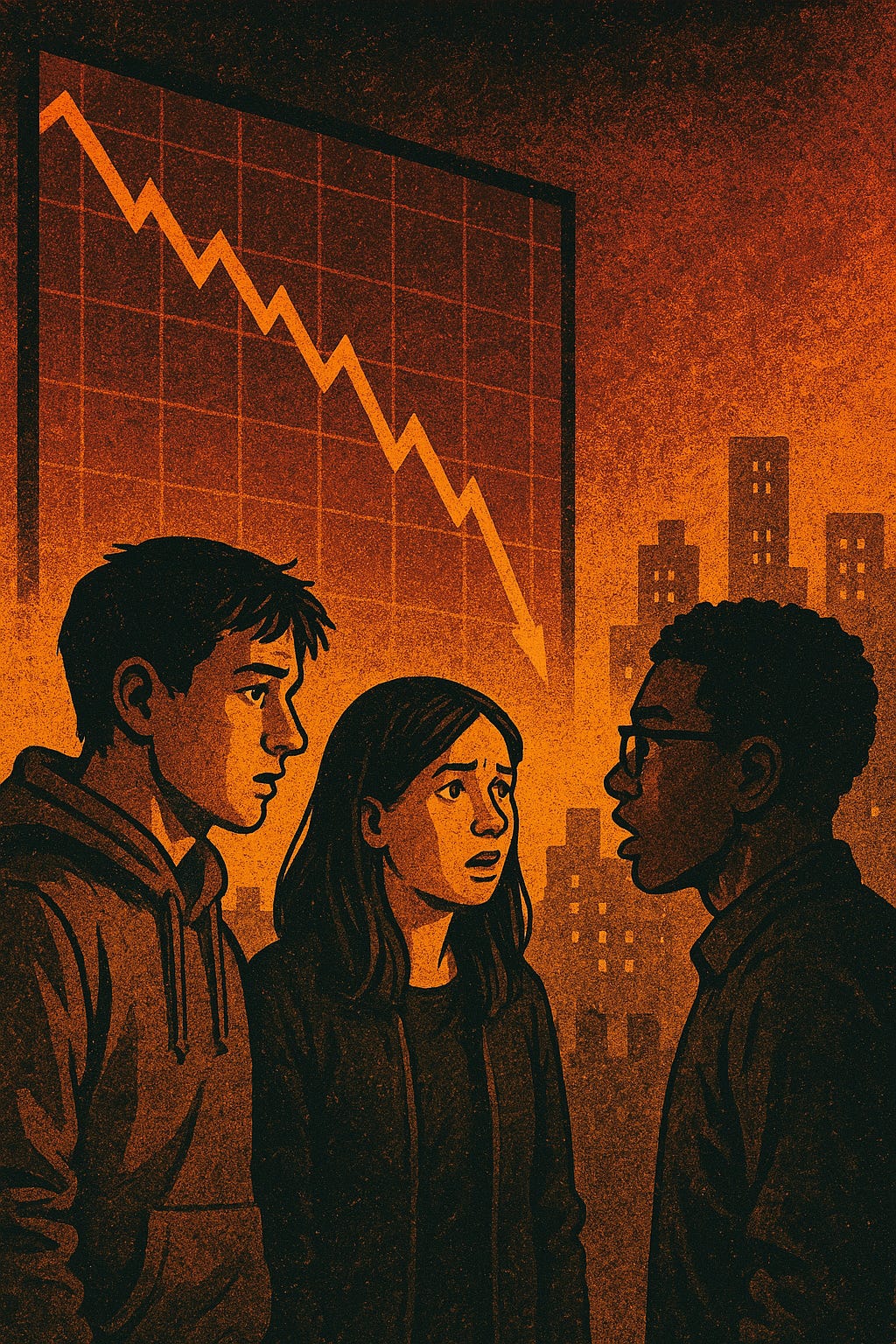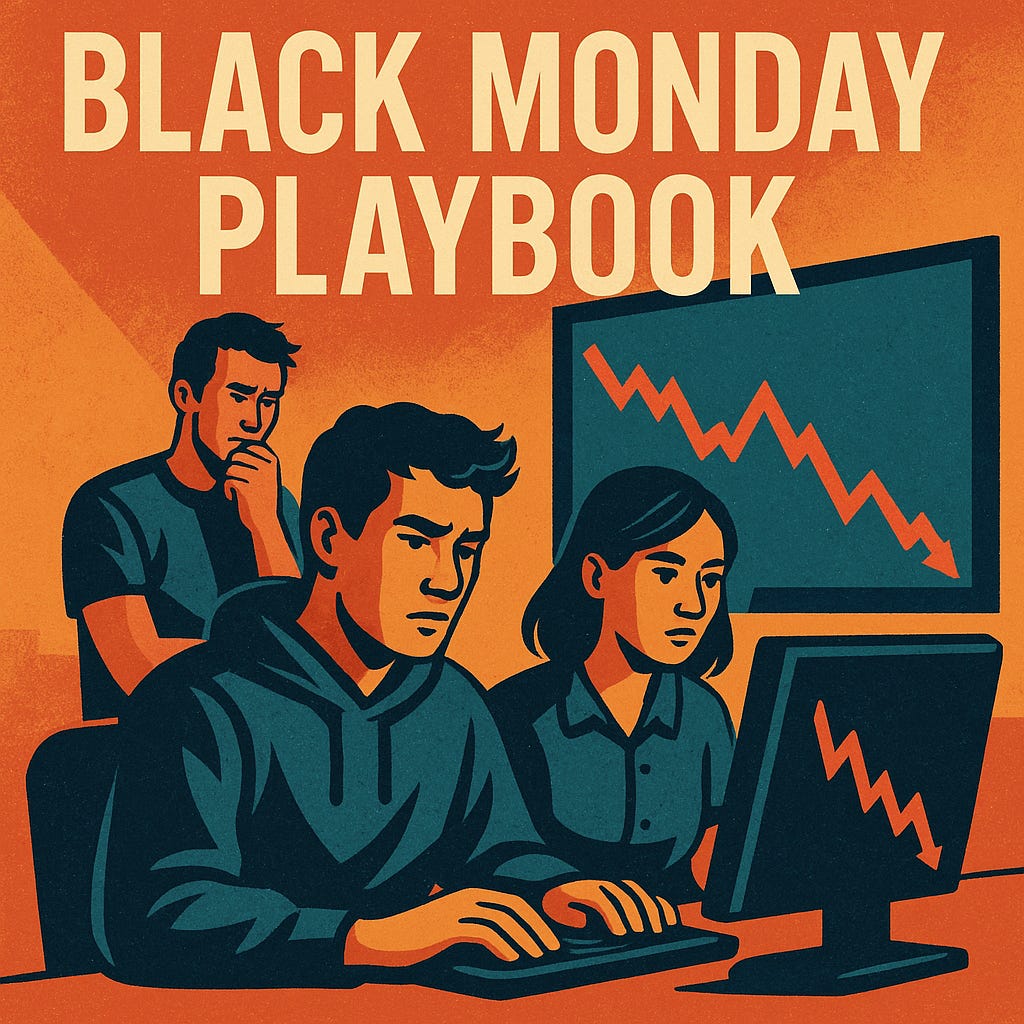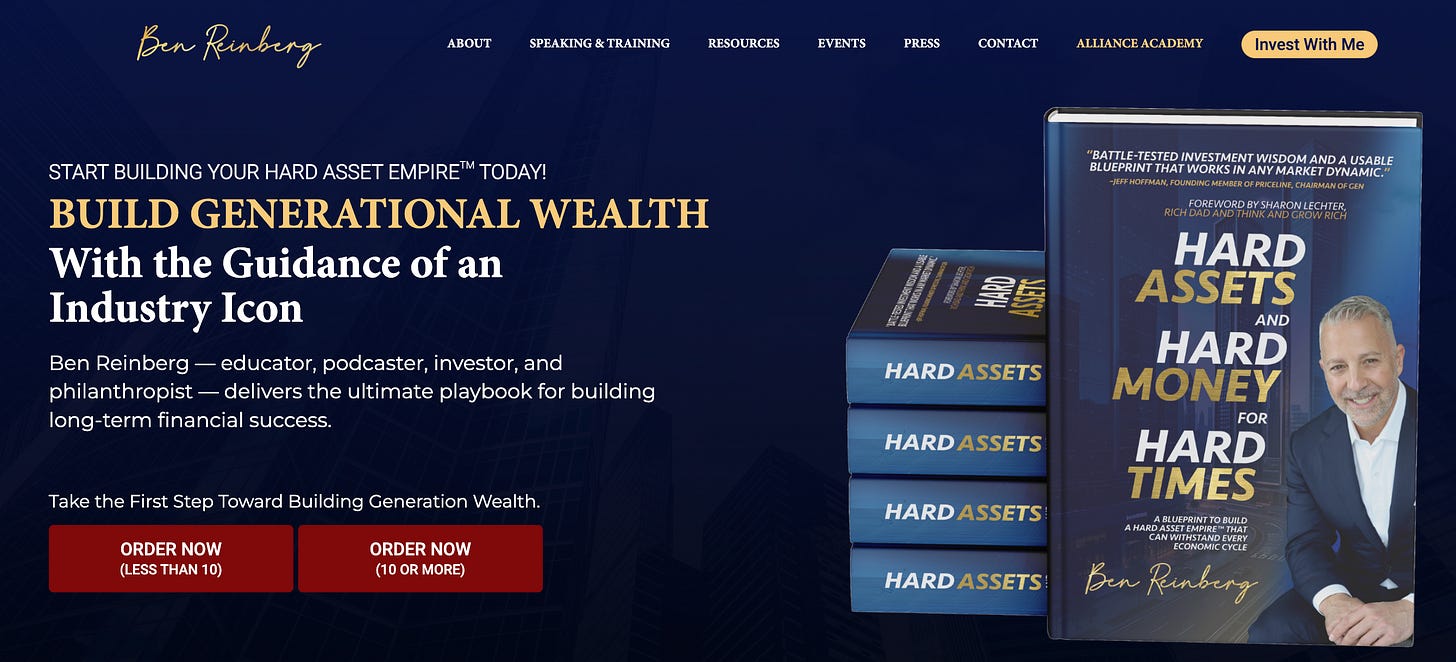Black Monday Playbook:
A Calming Guide to Market Crashes and Navigating the Complexity of Global Economic Shifts
“The real problem of humanity is the following: we have Paleolithic emotions, medieval institutions, and god-like technology.”
~E.O. Wilson, American Sociobiologist at the Harvard Museum of Natural History, Cambridge, Mass., 9 September 2009
Every generation of investors faces moments that shake their confidence. Portfolio values tumble. The media fan flames of panic. People rush to sell. But in the long arc of financial history, crashes are not anomalies — they are features of the cycle. They are reminders to step back, breathe, and re-center around what truly matters: sound strategies, human behavior, and context. This playbook is designed to do just that.
Welcome to your 2025 Black Monday Playbook — a guide to navigating chaos with clarity, managing volatility with wisdom, and placing today’s market tremors within the broader, global economic and political transitions we’re all living through.
What Constitutes a Market Crash?
A stock market crash is a sudden and severe decline in asset prices across a significant section of the market. Typically triggered by economic shocks, excessive speculation, systemic failures, or geopolitical instability, crashes are amplified by human emotion and herd behavior. As the opening quote of this post reminds us, these amplifications are pronounced in today’s algorithmic social media and 24/7 news cycle media deluge.
Yet, as history proves, crashes are often followed by powerful recoveries—and extraordinary opportunities.
7 Historical Market Crashes & Their Lessons
1. Black Tuesday (1929)
Event: A 25% two-day drop in the Dow Jones in October 1929 triggered the Great Depression. By 1932, the market had lost 89% of its value.
Recovery: Full recovery took until 1954.
Winners: Long-term, diversified investors who resisted the urge to sell.
Lesson: Avoid leverage. Spot bubbles. Think in decades, not days.
2. Black Monday (1987)
Event: On October 19, 1987, the Dow fell 22.6% in one day due to computerized trading and panic.
Recovery: Fully recovered in under two years.
Winners: Those who stayed invested or doubled down during the downturn.
Lesson: Markets rebound faster than expected. Don’t let panic guide decisions.
3. Dotcom Bubble (2000–2002)
Event: The Nasdaq lost 80% as tech stock speculation imploded.
Recovery: Over a decade for some indexes.
Winners: Value investors who focused on quality companies.
Lesson: Hype is expensive. Fundamentals endure.
4. Global Financial Crisis (2008–2009)
Event: Sparked by subprime mortgage failures and derivatives, global markets lost over half their value.
Recovery: Took about 5 years for broad indices.
Winners: Investors with the liquidity and courage to buy distressed assets.
Lesson: Liquidity is power. Patience and planning matter most in a storm.
5. COVID-19 Crash (2020)
Event: Pandemic-induced lockdowns sent markets plunging 34% in a matter of weeks.
Recovery: Fully rebounded in six months, with many indexes hitting new highs.
Winners: Those who followed their financial plans and avoided emotional selling.
Lesson: Crises can trigger sharp, fast rebounds. Emotional discipline is critical.
6. Flash Crash (2010)
Event: A nearly 10% plunge and recovery in minutes caused by algorithmic trading errors.
Winners: Traders with rapid execution and awareness of arbitrage opportunities.
Lesson: Technology creates new risks. Safeguards and speed matter.
7. Cryptocurrency Crash (2022–2023)
Event: Speculative excess, poor risk management, and regulatory scrutiny caused Bitcoin and other digital assets to fall 60%+.
Winners: Long-term believers in blockchain utility, not just tokens.
Lesson: Volatility is native to innovation. Focus on use cases, not hype.
8. Tariff Trouble (2025-?)
Event: President Trump’s globally broad Reciprocal Tariff implementation has geopolitical alliances in uncertain territory, and retaliatory threats escalate fear in the market.
Winners: Those with liquidity who can buy value across sectors and hard asset classes, while over-leveraged players are forced to exit for liquidity to meet margin calls and redemptions.
Lesson: Trees don’t grow to the sky, and after any prolonged period of free money (2008-2024) and excessive deficit spending with loss of productivity, the great deleveraging (tree trimmer) appears. Hold onto and buy into long-term value and fundamentals, and be greedy when others are fearful.
Behavioral Patterns That Repeat in Every Crash
1. Herd Mentality
As fear spreads, investors follow each other off the cliff. Everyone wants to sell first—and that drives markets lower than logic would suggest.
2. Fear and Panic
Fight-or-flight instincts kick in. Rational thinking shuts down. However, emotional decisions rarely lead to financial success.
3. Recency Bias
Recent events dominate perception. Investors forget past recoveries and assume current pain is permanent.
Strategies to Survive and Thrive
1. Focus on Fundamentals
During a crash, ask: Would I still want to own this business if the market closed for 10 years? If yes, it’s probably worth holding — or buying more.
2. Maintain Liquidity
Cash or short-term equivalents give you the flexibility to buy bargains and meet obligations without panic selling.
3. Rebalance When Volatile
Market swings can throw off your target allocations. Rebalancing brings discipline—and helps you buy low and sell high.
4. Stick to Your Plan
Your long-term goals shouldn’t change just because markets do. Crashes test conviction. Your financial plan is your North Star. If you would like a phenomenal blueprint, I suggest
Hard Asset Empire Blueprint and his new book to give you a process and visual for planning.5. Don’t Time the Bottom
Research shows missing just a few of the best days after a crash can ruin long-term returns. Stay invested, or leg in slowly.
6. Use Tax-Loss Harvesting
Downturns can create tax-saving opportunities by selling losers and replacing them with similar assets.
Zooming Out: Understanding the Global World Order
Financial crashes don’t happen in a vacuum. They are often symptoms— or catalysts—of deeper geopolitical, economic, and ideological transitions.
What Is the Global World Order?
The Global World Order refers to the system of rules, institutions, and power structures that guide international relations. Think United Nations, NATO, the World Bank, global trade agreements, and international law. These frameworks aim to maintain stability, promote peace, and facilitate economic collaboration on a global scale.
This order defines the hierarchy of global power—who leads, who follows, and how disputes are managed. And when it begins to fray, markets notice.
A Historical Look at New World Orders
Throughout history, especially in the last 250 years of American influence, we’ve seen several “world orders” rise and fall:
1. Post-Westphalian Order (1648–1914)
While this predates the U.S., its principles — state sovereignty and power balance — shaped early diplomacy and the notion of the modern nation-state.
2. Post-WWI Order (1919)
President Woodrow Wilson proposed the League of Nations to avoid another global war. While the idea failed due to weak global participation, it laid the groundwork for future international cooperation.
3. Post-WWII Order (1945–1991)
This is the world many investors were raised in: a U.S.-led liberal order featuring the UN, Bretton Woods institutions, NATO, and a Cold War stalemate. American capitalism and democracy became dominant ideologies.
4. Post-Cold War Unipolar Moment (1991–2008)
With the Soviet Union gone, the U.S. emerged as the lone superpower. Globalization boomed, markets opened, and Western ideals spread—until financial crises, terrorism, and nationalism began challenging the model.
5. Emerging Multipolar Order (2008–Present)
Today we're seeing a shift: China, India, and even AI-driven networks are challenging U.S. primacy. Power is more distributed. Institutions are being questioned as they always are during the 4th Turning. New alliances (BRICS, etc.) are forming. The dollar’s supremacy is even under debate, although toppling its hegemony is unlikely, especially as Bitcoin becomes a complementary sovereign tool for strategic national and fiscal security.
How Transitions Between Orders Affect Markets
Transitions between world orders are turbulent and often linked to:
Major Conflicts or Crises: Wars and economic collapses catalyze change.
Shifts in Power: When one nation (or bloc) declines and another rises.
Institution Building: New systems emerge to address new realities.
Ideological Showdowns: Competing visions — freedom vs control, centralization vs decentralization — shape the future.
Just as markets crash and recover, so too does the geopolitical landscape. Understanding this helps investors prepare for regime shifts that impact currencies, commodities, innovation, and trade.
So What Should an Investor Do?
Here’s the calming truth inside this storm: we’re likely in the early stages of a new global order. That doesn’t mean panic — it means opportunity. Think longer term. Diversify across geographies, technologies, and value systems. Study the new rules being written and consider how wealth, security, and innovation will flow.
Pair that big-picture thinking with practical discipline and historical awareness, and you’ll be far ahead of the crowd.
Crisis Is Not the End — It’s the Beginning
Every market crash has felt like the end of the world at the moment— but every one of them has eventually led to new highs. Every world order has eventually given way to a new one — bringing new risks and massive opportunities.
The most successful investors are those who stay informed, act with discipline, and see chaos not as destruction, but as a clearing of the field for the next wave of growth.
This isn’t the first Black Monday. It won’t be the last. But with this playbook, you’ll be ready.
Stay safe out there!
~Chris J Snook
Disclaimer:
This article is for educational and informational purposes only and should not be considered financial advice. Always consult with a licensed financial advisor or fiduciary before making investment decisions. Investing involves risk, and past performance is not indicative of future results.
Sources
Forging a "New World Order" Under a One World Government - Third World Traveler
World Order - The Princeton Encyclopedia of Self-Determination
How to Plan Instead of Panic in Volatile Markets – Morgan Stanley






